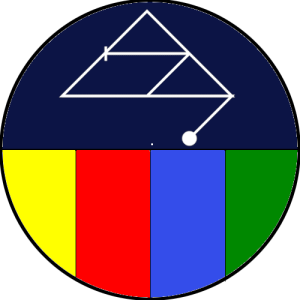Walking in Step with the Seasons
If you’ve been following along, your path is starting to feel more alive. You’ve learned how to make sacred space, perform simple rituals, and weave magic into your daily life. Now it’s time to look outward—to the greater rhythm that holds all life: the turning of the seasons.
Wicca is a nature-based path, and The Wheel of the Year is its seasonal calendar, marking eight festivals (called Sabbats) that celebrate the cycle of birth, growth, harvest, death, and renewal. These festivals align with the solar year—how the Earth tilts and dances around the Sun—and invite us to honor the changing light, weather, and crops.
Even if you live in a city apartment, this cycle is still unfolding around you. Every sunrise, every leaf that changes color, every shift in the air reminds you that you’re part of something vast and ancient.
The Eight Sabbats at a Glance
Let’s take a brief tour around the Wheel:
Yule (Winter Solstice, around Dec 21) – The longest night. The Sun is reborn, symbolizing hope, renewal, and the light’s return.
Imbolc (around Feb 1–2) – The first stirrings of life beneath the frozen earth. We honor purification, inspiration, and beginnings.
Ostara (Spring Equinox, around Mar 21) – Day and night are equal. The world blooms with fertility and balance.
Beltane (around May 1) – Fire festival of passion and creativity, celebrating love, growth, and union.
Litha (Summer Solstice, around June 21) – The longest day, when the Sun’s power peaks. A time for joy, abundance, and vitality.
Lammas or Lughnasadh (around Aug 1) – The first harvest. We give thanks for the fruits of our work and the Earth’s generosity.
Mabon (Autumn Equinox, around Sep 21) – Day and night are equal again. A time of gratitude, reflection, and preparation for rest.
Samhain (around Oct 31) – The final harvest and Witches’ New Year, when the veil between worlds is thinnest. We honor ancestors and the cycle of death and rebirth.
If you were to draw these on a circle, Yule and Litha would sit opposite each other, marking the shortest and longest days. The equinoxes and cross-quarter days form the spokes of the Wheel, creating a perfect symmetry.
Living by the Wheel
Following the Wheel of the Year isn’t about memorizing dates—it’s about noticing how the world feels.
You can start by paying attention to what’s happening outside your window. How does the light look? What birds or insects are active? What foods are appearing in markets? Each Sabbat is a mirror for the natural world’s rhythm.
Try marking the Sabbats on your calendar. As each one approaches, spend a few minutes learning its meaning and doing something symbolic. For example:
On Imbolc, light a candle for renewal.
On Beltane, plant something new.
On Mabon, cook a meal with seasonal produce and share it with gratitude.
These acts reconnect you to nature’s cycle—and by extension, to your own inner seasons.
Inner Seasons: A Mirror Within
The Wheel doesn’t just describe the world around you; it also describes your spiritual and emotional life.
Yule corresponds to rest and rebirth after darkness.
Imbolc is inspiration, when new ideas stir.
Ostara is growth and balance.
Beltane is creativity and desire.
Litha is full strength and confidence.
Lammas is achievement and gratitude.
Mabon is reflection and letting go.
Samhain is deep transformation and remembrance.
You can tune into these inner cycles by asking: Where am I on the Wheel right now? Maybe you’re in a personal Imbolc—dreaming up new beginnings—or a Mabon, winding down after a busy season. Recognizing that ebb and flow helps you live in harmony with yourself.
Exercise: Mark Your Place on the Wheel
Find or draw a simple Wheel of the Year diagram—eight spokes in a circle. Mark today’s date and the Sabbat it falls near. Then ask yourself:
What’s happening in nature around me right now?
What’s happening in me that mirrors this?
Write your answers in your journal. You might be surprised how your emotions and energy levels align with the seasons.
If you’re reading this series as it releases, you’ll be arriving at Samhain—the great turning point of the witch’s year. The energy right now is about endings, transformation, and preparation for rebirth. It’s the perfect time to awaken to your own spiritual renewal.
Journaling Prompt
“How do I experience the changing of the seasons? Which time of year feels most ‘magical’ to me, and why?”
This reflection helps you identify your natural affinities. Some witches feel most alive in the lush energy of summer; others thrive in autumn’s mystery or winter’s quiet. Knowing your rhythm strengthens your practice.
Closing Thoughts
The Wheel of the Year teaches that life is cyclical, not linear. Everything grows, fades, and returns. That truth can be comforting when you’re struggling or grieving—it reminds you that the light always comes back, just as the Sun returns after Yule.
As you continue your journey, begin noticing how your mood and energy rise and fall with the seasons. Let the Wheel become your compass. You don’t have to force yourself to be the same every day; you’re part of the living Earth, and she’s always changing too.
Tomorrow, we’ll dive into the rhythms of the Esbats—the lunar rites that complement the solar Sabbats—so you can begin working with the Moon as your monthly guide.


